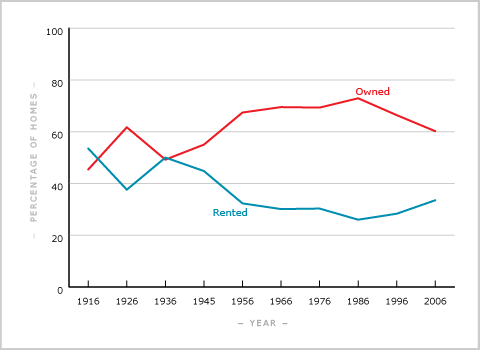
At the start of the 20th century the majority of city residents rented their dwellings. Government initiatives to create a property-owning democracy – through cheap state mortgages, among other things – saw home-ownership rates skyrocket in the 1920s. They fell during the 1930s economic depression, then rose steadily, peaking at 73% (both nationally and in the four main centres) in 1986. Since then home-ownership rates have declined. The reasons include increased costs, lower subsidies, and young people delaying settling down and having children. By the 2000s the ideal of a property-owning democracy was in retreat.
Using this item
Te Ara - The Encyclopedia of New Zealand

This item is licensed under a Creative Commons Attribution-NonCommercial 3.0 New Zealand Licence
Source: New Zealand census, 1916–2006









Add new comment